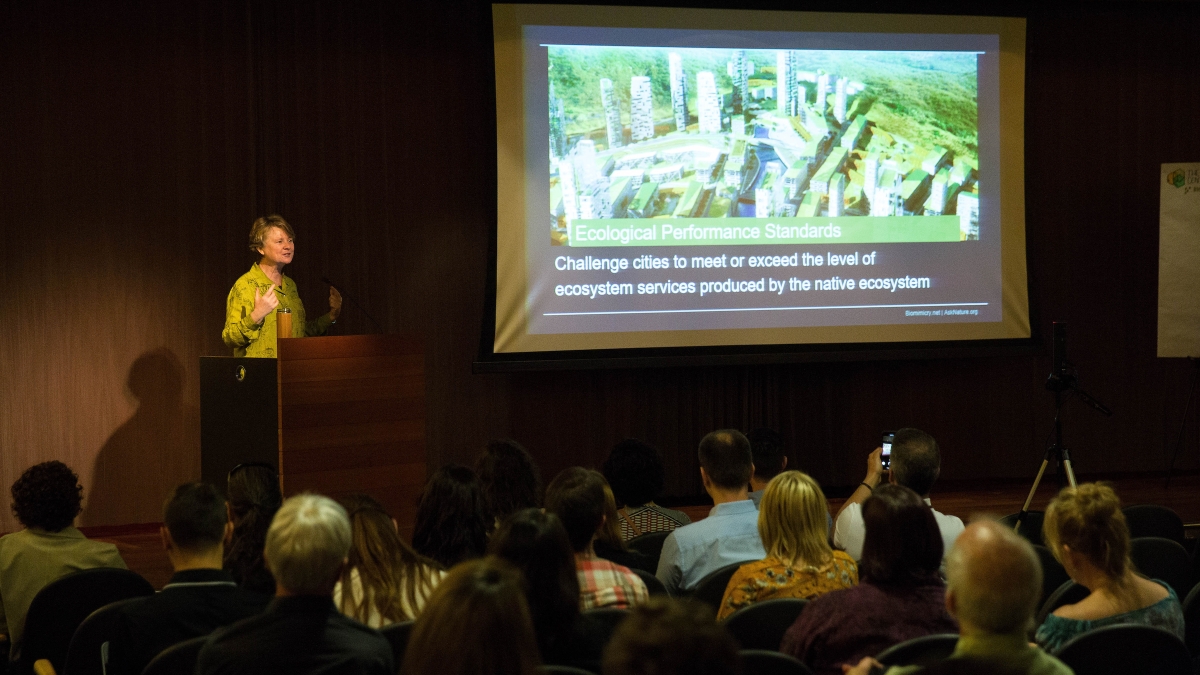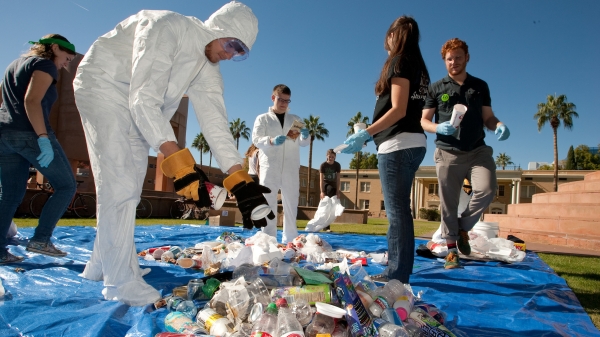Blurring the border between urban development and nature
Generous Cities Summit at ASU discusses urban biomimicry that would balance the effect of development on nature

Cities and the natural world seem to be at opposite ends of a spectrum, at least according to the dominant thinking of city dwellers like Woody Allen and mankind in general for the past 11,000 years: Keep the wolves out and the Thai takeout close.
Country folks, on the other hand, readily extol the virtues of clean air, water, greenery and birdsong.
But what if cities were fundamentally indistinguishable from the wildland next door? What if buildings were made of carbon-sequestering concrete and released air three times cleaner? What if streets were made of permeable asphalt and birds nested in plants growing up the sides of skyscrapers?
That’s the idea behind the Generous Cities Summit hosted by the Biomimicry Center at Arizona State University.
The two-day event, which kicked off Thursday morning, is bringing together sustainability scientists, urban designers, architects, ecologists, software developers, and government and business decision-makers to consider how cities can take inspiration from the natural world and produce the same benefits nature does.
Our current building stock already consumes 40 percent of all global energy used, and those buildings are responsible for nearly one-third of the world’s greenhouse gas emissions.
“Can you be in dense groups and not destroy the ecosystem?” asked keynote speaker Janine Benyus, adjunct faculty in the School of Sustainability and biomimicry advocate.
Images of cities draped in greenery and shining with water features flashed across the screen behind her.
“We’re part of the natural world, so our part has to function too,” Benyus said. By function she meant filter and store water, sequester carbon, pollinate, cool, and shelter wildlife, among other tasks.
Using “nature as measure and model,” humans can become producers of ecosystem services, Benyus said.
It’s going to mean a change in urban design and architecture — and a change in worldview, she said.
“How many ecological functions can we get per square foot? … How many services can we meet? You design into that framework.”
Top photo: Cofounder of Biomimicry 3.8 Janine Benyus addresses the audience during the Generous Cities Summit hosted by the Biomimicry Center at the ASU Tempe campus on April 19. Photo by Deanna Dent/ASU Now
More Environment and sustainability

Celebrating Earth Day around the world
Originating in the United States in 1970, Earth Day is now celebrated worldwide. But even before it became an official day, many countries were already mindful of their carbon footprint in their…

A run on fossil fuels: ASU professor says climate legislation could have unintended consequences
As concerns about climate change grow, policymakers are increasingly voicing support for stricter fossil fuel legislation. Their discussions and proposals raise questions about the future of the oil…

Confusion complicates US recycling efforts
In most major cities and buildings, recycling bins can often be found alongside trash bins in an effort to encourage recycling. But is it working? According to the U.S. Environmental Protection…